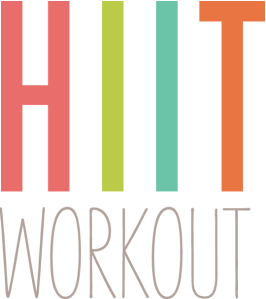The
U.S. Men's National soccer team opens its play in the
2010 World Cup against England in a much anticipated matchup Saturday, June 12 in Rustenburg, South Africa. A rematch of 2 countries that met 60 years ago in group play at the
1950 World Cup in Brazil, and the site of perhaps the most glorious U.S. soccer victory of all time.
And though a victory over England in 2010 would not be the monumental upset it was in 1950, and though the American side during the summer of 2009 at the Confederations Cup beat
2008 European Cup champions Spain and led Brazil 2-0 before succumbing in the finals, U.S. soccer is still viewed as a second-class citizen by most soccer experts.
Brazil, Italy, Holland, Germany, Spain, Argentina, France and England are traditionally considered top tier soccer nations. Most experts would rank the U.S. somewhere among the
10th to 20th best soccer playing nation in the world.
U.S. soccer has made tremendous strides since 1950. Popular enough to sustain the North American Soccer League from 1968-1984. Resilient enough to renew pro soccer with
MLS starting in 1996, and the league has grown from 10 teams to
18 teams by the start of the 2011 season. Internationally, we've qualified for 6 straight World Cup trips starting in 1990 after a 40 year hiatus. And the U.S. will likely be awarded another World Cup in either 2018 or 2022 after successfully hosting the 1994 World Cup.
Despite all these positives, there are various economic explanations why the U.S. continues to languish behind the world soccer powers. Namely, a lack of TV and corporate money in the U.S., 'first-mover advantages' and socioeconomic differences between the U.S. and many superior soccer playing nations.
TV and Corporate MoneySpaniard Pau Gasol of the LA Lakers plays in the NBA rather than Spain's top basketball league because there's more wealth and prestige in the NBA than he can find in any other basketball league in the world. Similarly,
Clint Dempsey and Tim Howard of the U.S. soccer team play their professional
soccer in England because it has far more wealth and prestige than the MLS.
This difference in wealth and prestige stems from international differences in the way TV and corporate money is expended on soccer. There is a domino effect that continues to hurt the visibility of American soccer leagues like MLS because lower revenue streams from media and corporate sponsorship deals hamstrings the league's ability to offer salaries that will attract the world's best players to America.
If fans aren't watching on TV, then ratings are lower. If ratings are lower, then MLS can't garner the type of TV contracts that you see in the English
Premiere League or the National Football League. If ratings are lower, then MLS can't charge premium sponsorship and advertising rates.
With a paucity of TV and sponsor/ad revenue compared to other world soccer leagues and other American sports leagues, the league cannot afford to pay top world players in their prime the kind of dollars they can command in the top leagues in Germany, England, Italy, or Spain.
In American sports, the most lucrative playing careers in team sports have been and continue to be found in professional basketball, baseball, hockey, and football. Since these sports yield a higher rate of return to the professional athlete in terms of a greater likelihood to make more money and not have to travel abroad to do so, these inherent realities - which owe themselves to the popularity of these sports and their subsequent ability to secure significant TV and corporate revenue - further depletes the potential talent base for American soccer since some top-flight amateur athletes may choose more lucrative sporting careers.
'First Mover' Advantages and Socioeconomic FactorsSoccer is England's game, much like hockey is Canada's game and pigskin football is America's game. Going back to the
Cambridge Rules drawn up at Trinity College in 1848 to help standardize the organized rules of 'football' across various English public schools, this highlights the significance and long-run power associated with the 'first mover advantage'. It was England's sport first, and as such to this day, their nation lives and breathes soccer...and this is reflective in the broadcast rights fees and the corporate dollars the EPL can command.
The historical popularity of soccer in South America and other nations with lower per-capita income levels may owe itself to economic logistics. Soccer is not an expensive game to play. You need a ball. You need space. And sometimes not even that to grow a passion and skill for the sport. Pele, often regarded as the best player ever and who came from humble beginnings, juggled oranges in the streets of Brazil as a boy.
For many lower income nations, most other sports are cost prohibitive either in terms of the simple logistics of playing the sport at the youth level (e.g. hockey, American football) or the infrastructural and organizational costs of player development, equipment and facilities and league administration. As such, soccer is THE sport of many nations where the socioeconomics dictate that soccer is the most financially accessible option to a nation's residents.
Conversely, the U.S. has the wealth and infrastructure to sustain and support leagues in plenty of sports more historically native to North America. And with more money to throw at players in these sports, there is arguably a financial incentive that may steer the best amateur athletes away from soccer. In other nations, the main draw both financially and in terms of prestige is soccer. Subsequently, other nations are more likely to attract their best athletes to the sport of soccer.
As a soccer enthusiast, I'm ever hopefully that the popularity and interest in soccer on a professional level in the U.S. will continue to grow, which is why the U.S. performance in the 2010 World Cup, and in particular their first match against England, is so important for promoting soccer to the casual American sports fan.
Because without higher TV rights fees and greater outlays from the corporate sector, it's hard to overcome first mover and socioeconomic factors which partially explain America's current 2nd to 3rd tier place in the world of soccer.
By Dr. Rishe is the Director of Sportsimpacts and an Associate Professor of Economics at Webster University in St. Louis, MO.
Newscribe : get free news in real time 













